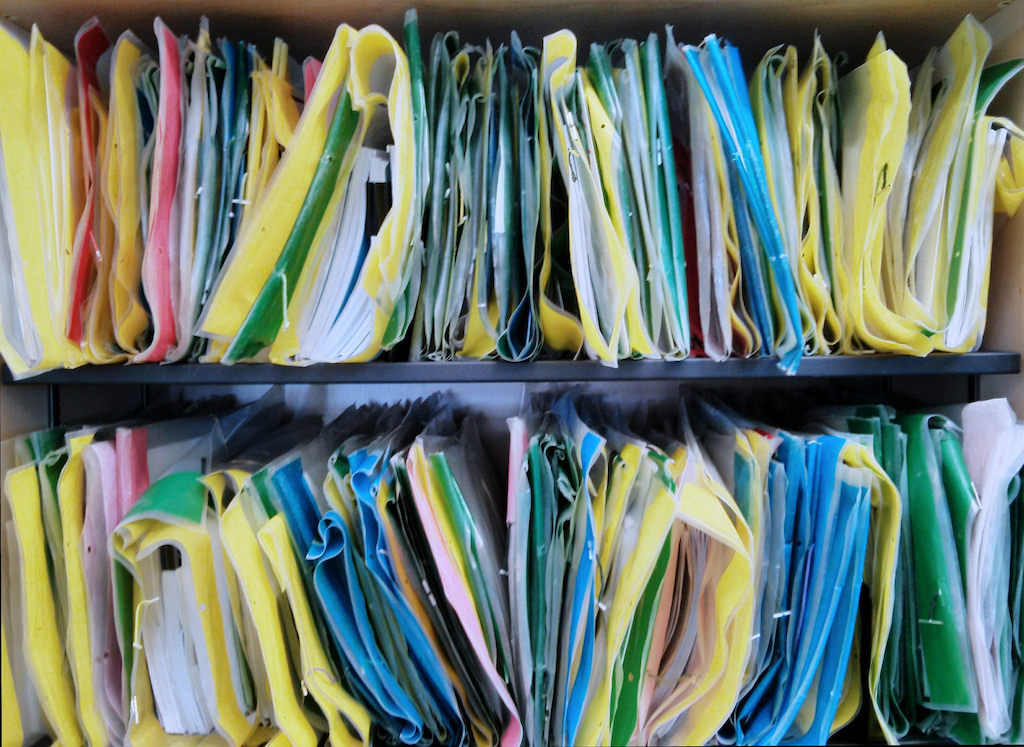When you’re self-employed like I am, you’re responsible for every aspect of your career, your reputation, and your revenue. If that sounds daunting, it is. But one of the most overlooked aspects of self-employment is something I didn’t even think about until I’d been doing it for awhile, and it’s something I think most of us struggle with every single day:
The intangible feeling of “am I doing enough?”
On the surface, the answer seems simple: just do as much as you need in order to get by, right?
Well, sure, there’s a baseline to start with. In theory, my monthly bills + miscellaneous expenses + taxes + savings + reinvestment in my business = how much I need to “get by” at minimum. But that figure doesn’t account for things like emergencies, opportunities, vacations, repairs, inflation, and everything else you can’t entirely plan for no matter how complex your financial projections are.
Those unknowns mean there’s no “safe” amount of revenue, or of work, that I can do and feel like I’m “reliably ahead.” This uncertainty and variability makes planning and budgeting difficult — especially when some of my revenue is dependent on project fees that only get paid when a project is reviewed and approved, which I have no control over.
I don’t know about you, but when I can’t confidently plan or budget, I have trouble feeling like I’m not perpetually behind. And that leads to me feeling, every day, like I could — and should — be doing “more.”
But What Exactly Does “More” Mean?
More work? Sure! More money? Yes! More, as in “bigger”? Absolutely! More, as in “scaling up in terms of complexity and prestige?” Hey, why not?
But by those criteria, when would I ever truly feel like I was doing enough?
At the most myopic level, my daily goal is to make enough money to stay alive. But just treading water is not enough. As the fable of the grasshopper and the ant has been reminding us for centuries, if you don’t plan for the future, the future will be your undoing. So “just” earning enough money to be solvent now means I’ll be broke eventually.
Delightful.
So, not only must I do enough to cover my bases today, but I also need to be building my business, my reputation, my skills, and my revenue streams so they’ll grow and expand with time. And I need to spend time on this every day, because if I don’t, the people who are will easily surpass me. This big picture career trajectory is helpfully baked into most day jobs, but when you’re self-employed, all that forward advancement is up to you… at the exact same time that your daily priorities are also knocking at the door, demanding your attention now.
But Wait, There’s Less!
To be fair, I’m just speaking in terms of money or career, which are mostly financial, measurable, resource allocation issues. These are the easy problems to solve.
What if, by “enough,” I was thinking about output or impact?
What if you work for a nonprofit, and your version of “enough” is “am I creating enough change in the world?” Or what if you’re an artist, and you’re wondering “how much effort do I have to invest before my skills are good enough to be taken seriously, and for me to be proud of what I do?”
“Enough” can be a crippling thought process, because at a certain point there’s no such thing as “enough.” There’s just the chasm between “where I am” and “where I want to be, or where I feel like I should be.”
And while we’re all trying to balance today against tomorrow, there’s one resource we never feel like we have enough of: time.
All of which brings me to the reason I started writing this post in the first place.
A Recipe for Not Feeling Like You’re Drowning in the Ocean of Your Own Life
After years of swimming in the uncertain seas of freelance, I think I’ve found a daily workflow balance that works for me. It helps me feel like I’m doing “enough” today, but also doing “the right things” to build for tomorrow.
Here’s my formula:
- 3 work tasks every day for current clients
- 1 business development task
- 1 maintenance / home task
- 1 creative outlet
Notice that I didn’t say how long I should spend on any of them. That’s because the amount of time I’m investing is irrelevant compared to the larger question of “how many balls am I kicking forward every day?” In this case, as long as I make progress on these 6 tasks, that’s “enough” for me to feel like I spent my day proactively. It helps me sleep better without laying awake wondering what ELSE I should be doing to feel like I’m not falling behind. If I’m finishing projects, the invoices will follow, and that peace of mind is invaluable toward finding a baseline balance I can actually build from.
Notice also that I include two non-financial tasks in this total. Doing something around the house lets me keep up with all the miscellaneous chores (dusting, sweeping, watering plants, laundry) that might otherwise fall off my work-radar, and doing something creative keeps me grounded in my personal expression (and my long-term career goals), even if it’s as brief as writing a page in my own journal.
Plus, there’s a hidden benefit to this formula: it doesn’t always take all day. Believe me, there’s a HUGE difference between assigning myself 6 tasks in a day but “only” getting 5 of them done vs. assigning myself 3 tasks and “also” getting 2 more done. One is a cause of depression; the other is a cause for celebration. And when you’re a company of one, you need all the joyous momentum you can muster.
3+1+1+1
If you feel overwhelmed by your own life, try finding your own formula.
Set your numbers low enough that they’re consistently achievable, but high enough that you’re actually making progress and staying at least a step ahead of the curve.
Does the order you do these things in matter? It might. But that’s a topic for a future post.
Baby steps, folks. We all have to start somewhere.
IMAGES: “Inbox” by Paul Downey via Flickr Creative Commons License, and “Chipmunk Chairman of the Board” © Brandon Sheffield and Dami Lee (which I saw on Instagram and haven’t stopped laughing at since)
If You Liked This Post
… then you may also enjoy this post about overcoming imposter syndrome, or this post about how to get back on track once your life has gone in the wrong direction.





1 Comment
How to Plan Your Workday to Build Momentum – Justin Kownacki · January 17, 2017 at 2:35 pm
[…] week, I mentioned the daily formula that helps me feel like I’m getting “enough” done, so I can turn that momentum into actual […]